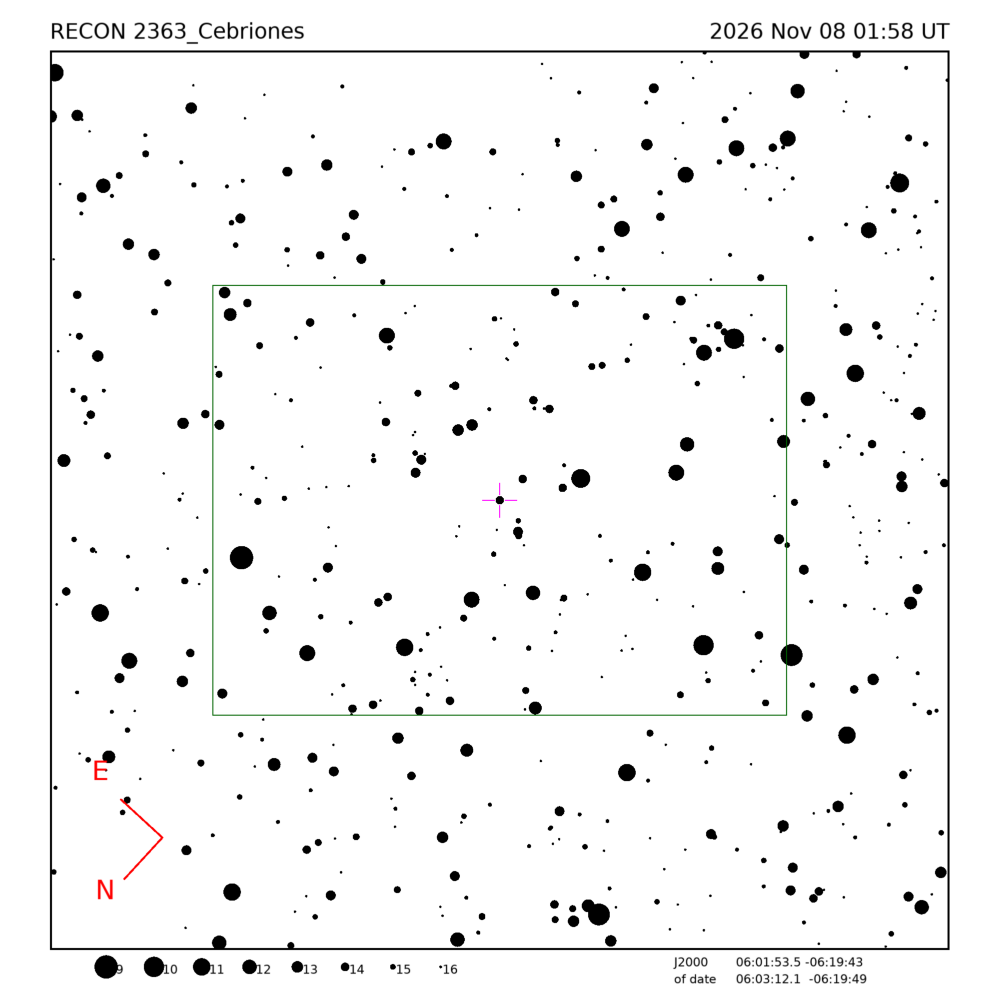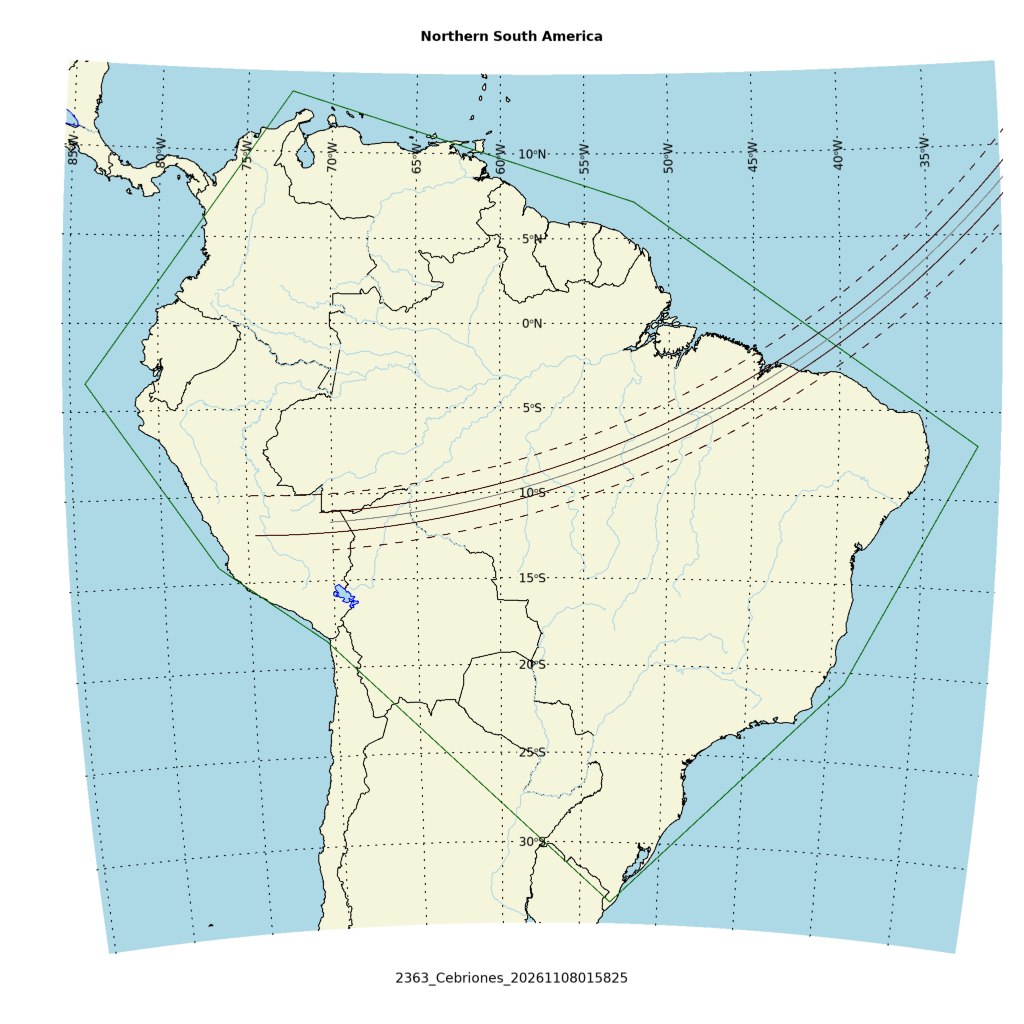
Occultation event with (2363) Cebriones, event index number 4602
Regions able to see the event: SAmericaN
Geocentric closest approach at 2026/11/08 01:58:25 UTC
J2000 position of star is 06:01:53.5 -06:19:43
Equinox of date position of star is 06:03:12.1 -06:19:49
Star is 114 degrees from the moon. Moon is 2% illuminated.
Stellar brightness G=14.5, apparent brightess of occulting body is G=14.5
Use an exposure time of 0.55 seconds with the standard RECON-QHY system.
SNR of 9.9 per integration for unocculted signal
Expected flux drop is 51% with SNR of 5.0 for the occulted depth (per occulted point)
Apparent velocity is 16.8 km/sec on the sky relative to the star, or, 17.5 arcsec/hr.
Position angle of asteroid motion is 34.8 degrees
The recommended exposure time corresponds to 9.2 km per image.
The 1-sigma error in the time of the event is 1.3 seconds.
The 1-sigma cross-track error in the shadow position is 27.6 km.
The sky-plane scale is 3459.2 km/arcsec.
Diameter estimates:
93.8 km assuming a 5% albedo, maximum of 5.6 sec for a central chord
38.3 km assuming a 30% albedo, maximum of 2.3 sec for a central chord
Cross-track diameter of 96.0 km used for deployment plan.
Star training set for 2363_Cebriones, (2026/11/08 01:58UT) Object RA Dec mag sep mel Rigel 05:15:49.8 -08:10:21 0.1 11.89 124 Saiph 05:49:01.9 -09:39:44 2.1 4.84 116 PPM 188881 06:12:19.5 -06:45:43 6.5 2.31 112 PPM 188742 06:04:45.4 -06:23:50 8.0 0.39 114 PPM 188715 06:03:30.2 -06:13:24 9.1 0.13 114 2363_Cebriones 06:03:12.1 -06:19:49 14.5 114 Positions are for equinox of date


Star training set for 2363_Cebriones, (2026/11/08 01:58UT) Object RA Dec mag sep mel Rigel 05:14:32.3 -08:12:06 0.1 11.89 124 Saiph 05:47:45.4 -09:40:11 2.1 4.84 116 PPM 188881 06:11:01.2 -06:45:15 6.5 2.31 112 PPM 188742 06:03:26.8 -06:23:41 8.0 0.39 114 PPM 188715 06:02:11.5 -06:13:17 9.1 0.13 114 2363_Cebriones 06:01:53.5 -06:19:43 14.5 114 Positions are for J2000